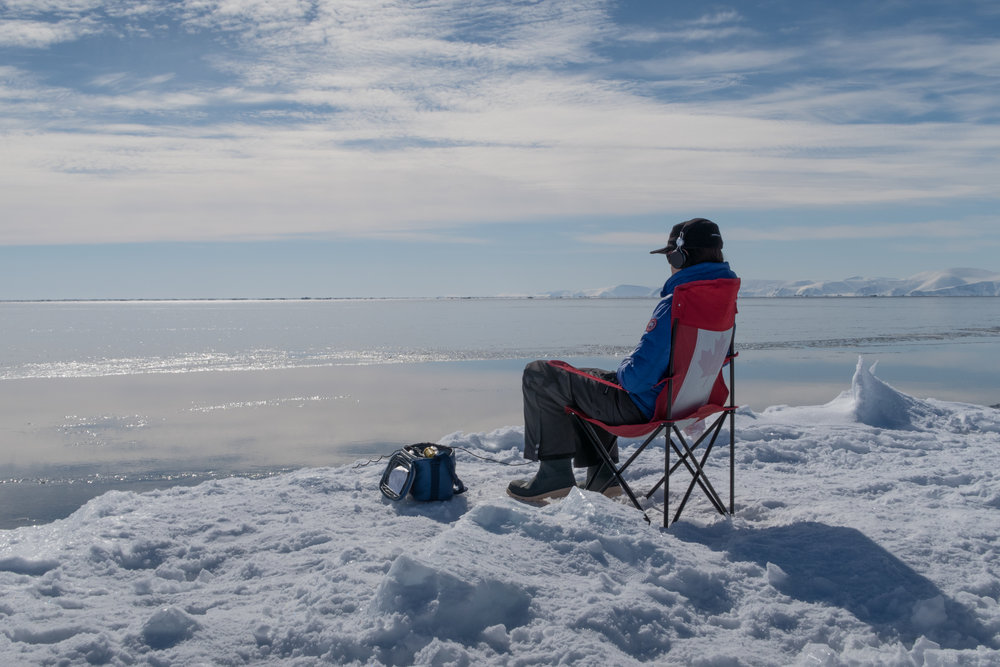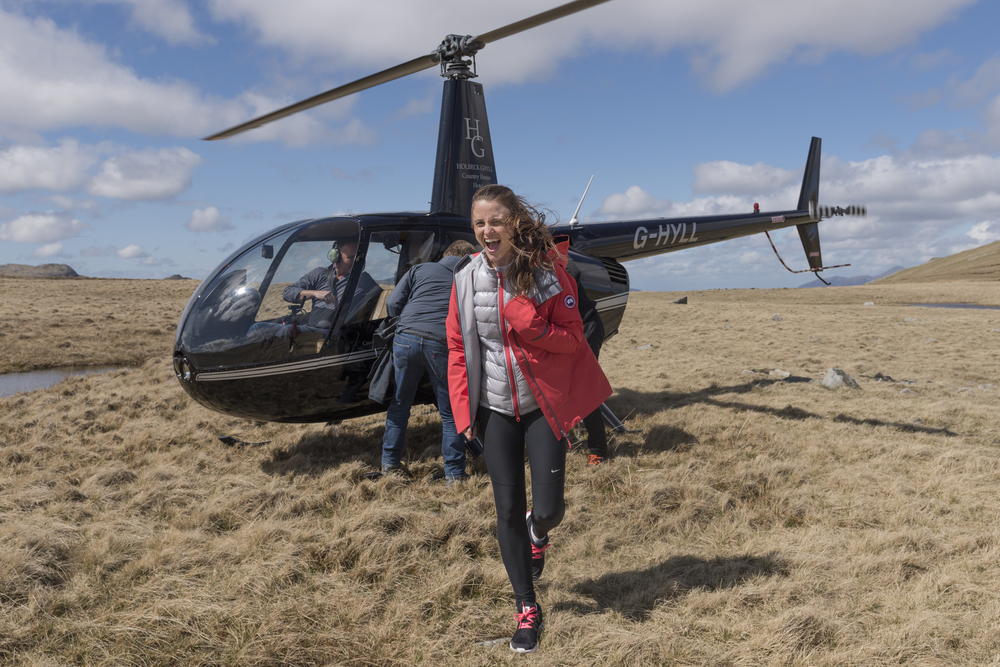
"Sinaaq" is the Inuit word for the floe edge. I was very privileged to have spent an incredible week camping on, and exploring the ice floe edge in Sirmilik national park in the Nunavut province in Canadian high Arctic, also the gateway to the historic north west passage. I have no idea how I'm going to describe the beauty of life on the ice floe edge and do it justice, but I'll try.
We set up base camp on the ice in the area of frozen water between Eclipse sound and Baffin bay after a 3 hour snow mobile drive from the nearest community, Pond inlet. From here the plan was to explore the ice floe edge from the ice and water with skis, kayaks, stand up paddle boards and snow mobiles, hopefully spotting some local wildlife.

I’ve travelled across ice many times, mostly skiing, but I’ve never actually lived on it. It was strange to think that the very ground I was standing on was half a meter thick, much less in places, with nothing beneath. It amused me to think that a seal could be swimming beneath my tent as I cosily slept in my sleeping bag at night.
The only reminders we had that we were on ice, not land, were the seal breathing holes and the cracks in the ice. On our first morning, we excitedly headed off on our skis to explore and I discovered the joy of cross country skiing without wearing a harness, pulling a very heavy sledge and on a flat surface. So much smoother and faster! We saw animal prints every where, from different sized polar bears, birds and arctic foxes. But we also saw a lot of cracks in the ice that weren’t there when we arrived the night before and had set up camp.

The strong winds overnight, 24 hour daylight and warm temperatures was melting and moving the ice fast and cracks were forming on the ice sheet, some miles long, and our camp was now on the wrong side of a rather wide one. So, less than 24 hours after we built camp, we took it down and re built it on the “We won’t end up cruising out to sea on our own ice island” side of the crack. To reward our removal efforts, we then kayaked through the problematic crack. It was’t quite wide enough to get our paddles in the water, but we amused ourselves by “paddling” through the snow on the ice and pushing ourselves along.
Despite being surrounded by ice and water most of it wasn't drinkable as it derived from salty sea water. We had to travel to the glacier or stranded glacial icebergs made from fresh water and hack off chunks of ice, thousands of years old, and haul it back to camp to boil down to meet our fresh water needs.

Every day we travelled out to ice flow edge. It fascinated me to see how quickly the ice changes, hourly sometimes. Depending on the wind and currents, huge cracks open and close in front of your eyes, the tides lift and lower the ice, it melts, re freezes and the colours change with the light. The same view was never the same on the next visit even hours later. Within less than an hour a big expanse of open water could be a solid dumping ground of chunky, snow covered ice boulders with no water in sight. I was mesmerised by how the ice moved, it was like watching TV in fast forward but there was no button to press.

We’d drop a Hydro phone into the water that we connected to a speaker so that we could blissfully sit, take in the view and listen to the seals and whales communicating to each other beneath the ice. The conversation between the seals was constant, a high pitched, descending bomb sound with individual seals speaking over one other. We were a captive audience who could hear them perfectly as everything else around us was silent. From time to time the Narwhal would interject with their clicking sounds. It was the perfect sound track to the endless blue view in front of us.

The highlight of the trip for me was seeing a large polar bear swimming, using his front paws to effortlessly break through the ice as he progressed forward. Behind him he left a 2 meter wide channel, that once he had safely disappeared, we then kayaked through. When skiing we saw animal prints everywhere. It was fun to guess how old the prints were and the size of the Polar bear judging by the comparison of the print to the size of our hands, only to be corrected by our knowledgable Inuit guides. Often we didn’t have to guess as we could see the bear, a cream coloured blob in the distance with a black nose strolling across the ice, frequently looking back at us with curiosity. We’d also find its left over dinner, bloody smelling seal carcasses that they had expertly skinned in one whole piece, eating only the fat. Cubs walked in line behind their mothers, occasionally running to keep up or to pounce on their sibling to provoke play fights. Seeing the natural behaviour of the bears really was magical.

Kayaking on the ice floe edge was a very unique experience. The kayaks were almost actually sitting on top of the ice, acting like an ice breaker ship. Our paddles had to break through the ice to enter the water before you hit the resistance of the water to push against and move forward. Sometimes it was too thick and we were just pushing off the ice. In other areas the ice was thinner and had stacked up in layers. With my paddle flat I could slide under each layer and lift it like I would taking a pizza out of a traditional oven. Patting this softer ice with my flat paddle produced visible shock waves that spread out on the ice surface, I couldn't resist patting it repeatedly just to see the force of the impact and the range of the waves. Other sections were like paddling through thick, gritty black water. Stranding's on the ice were a regular occurrence.

The height gained from a Stand up Paddle board gave a completely different perspective. I could more easily see the massive size of the baby blue coloured icebergs beneath the water level, always much larger than above the water line. Again, I had to cut through the thin layer of ice with the tip of my paddle to enter the water and execute my stroke. The speed was slow, cumbersome and the paddling arduous, but even at the time I was aware of the uniqueness of the challenge my surroundings gifted me as an incredible paddle experience that surely cannot be surpassed.
My week living on the ice was like watching animated ice theatre. Before this expedition I hadn’t realised just how aggressive and dynamic ice can be. All the different perspectives I gained from being on the water, the ice, atop of huge stranded icebergs we climbed and from the wildlife we observed helped me to understand what a delicate but almighty element ice is. We slept on it, drank it, travelled on it, watched it move and evolve from ice to water and then back to ice again and touched it in its different forms.The versatility of ice is endless.
Nor had I appreciation for how changeable behaviours and speed of that change would greatly challenge and astound us in equal measures. Our survival depended on it but conversely it was also our greatest threat whilst producing some of the most spectacularly beautiful scenes. It really put on a spectacular show for us, perhaps one of natures greatest.
